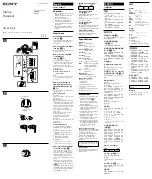
Condition
Metric Change
• Noise or distortion in the audio channel such as
echo or audio levels.
• Tandem calls that undergo multiple
encode/decode such as calls to a cellular network
or calling card network.
• Acoustic problems coming from a speakerphone,
handsfree cellular phone or wireless headset.
Check packet transmit (TxCnt) and packet receive
(RxCnt) counters to verify that voice packets are
flowing.
Conceal Ratio is near or at zero, but the voice quality
is poor.
Network impairment from packet loss or high jitter
levels:
• Average MOS LQK decreases may indicate
widespread and uniform impairment.
• Individual MOS LQK decreases may indicate
bursty impairment.
Cross-check the conceal ratio and conceal seconds
for evidence of packet loss and jitter.
MOS LQK scores decrease significantly
• Check to see if the phone is using a different
codec than expected (RxType and TxType).
• Check to see if the MOS LQK version changed
after a firmware upgrade.
MOS LQK scores increase significantly
Voice quality metrics do not account for noise or distortion, only frame loss.
Note
Voice Quality Reporting
You can capture voice quality metrics for Voice over Internet Protocol (VoIP) sessions with a Session Initiation
Protocol (SIP) event package. Voice call quality information derived from RTP and call information from
SIP is conveyed from a User Agent (UA) in a session (reporter) to a third party (collector).
The Cisco IP phone uses User Datagram Protocol (UDP) to send a SIP PUBLISH message to a collector
server.
Supported Scenarios for Voice Quality Reporting
Currently, only the basic call scenario supports voice quality reporting. A basic call can be a peer to peer
incoming or outgoing call. The phone supports periodic SIP publish message.
Cisco IP Phone 7800 Series Multiplatform Phones Administration Guide
323
Cisco IP Phone Troubleshooting
Voice Quality Reporting
















































